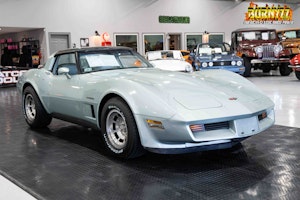Media | Articles
The best of old and new
Would you like to buy a brand new ‘66 Ford Mustang, today? Oh, a retro revival like today’s Dodge Challenger has its charms, but it just lacks a genuine vintage ride’s old soul.
The notion of owning a car with classic looks but a sound, modern structure has undeniable appeal. The stumbling block, of course, is finding a starting point – a body shell free of rust or one that can be readily repaired. Virtually every other part for these popular classics, from door handles and window glass to suspensions, weatherstrip seals and upholstery is reproduced now and can be easily ordered from sources like CJ Pony Parts, Dynacorn, Mustang Depot and National Parts Depot. But while a restoration is absolutely rewarding, the car retains certain original shortcomings. For those who want to upgrade the running gear, crate engines and new six-speed transmissions are available; modern brakes, electronics and climate control systems can all be adapted as well.
But the body shell remains a sticking point. Fortunately, companies like Dynacorn Classic Bodies complete the picture. It’s a matter of 600 to 1,000 hours of labor from there, and a vigorous exercise program for your checkbook.
A new 1965-66 Mustang convertible or fastback body shell, or one for a 1967, ’68, ’69 or ’70 fastback, will set you back $17,500 according to the Dynacorn website, plus a $495 crating fee. Dynacorn’s sales manager, Larry Brogdin, says that shipping from the Camarillo, Calif., facility adds about one dollar per mile.
For customers not wishing to do the work themselves – either transferring parts from a donor car or doing a complete catalog build – Dynacorn says it can refer customers to shops equipped to do the job, which is the route most buyers take. Experienced builders like Elliott Calvetti of Desert Classic Mustangs in Scottsdale, Ariz., can offer guidance on the anticipated costs. You might want to take a deep breath first, though.
Marketplace
Buy and sell classics with confidence
“Prices start at around $95,000 and go all the way up to around $200,000,” said Calvetti, depending on the choice of powertrain and how deeply customers dive into the option list. He adds that most of his customers tend to tick off many of those costly options.
“Cars are more personal now than five years ago,” he said. “You used to go to car shows and everything was stock. Nowadays people want to personalize their car to stand out.”
Dynacorn’s Brogdin said he sees the same trend.
“Ninety percent of these cars are over-restored,” he said. “Most of the time with a project like this, people are going over the top.”
Even an over-the-top build can appear, at first blush, bone stock. Take, for example, a 1966 Mustang GT convertible, starting at $159,000, built by Revology Cars of Orlando, Fla. A closer look reveals a 435-horsepower 5.0-liter V-8, leather interior, power windows and locks, keyless entry, modern audio and air-conditioning systems, and a long list of other equipment. A similarly equipped ‘66 fastback starts at $167,500. Revology strives for a high level of fit and finish; the company’s chief executive, Tom Scarpello, says: “We can’t keep up with demand.”
Owners who base their project on a reproduction body shell can take comfort in knowing that their new-old Mustang is built with what Dynacorn claims is better sheet metal, too.
“There’s no comparison whatsoever,” says Brogdin, adding that not only is the steel galvanized and often thicker than the original metal, but that tolerances are tighter. “We use the same stuff they make new cars out of.”
Before you whip out your checkbook, however, it’s important to note that registration and title laws for reproduction cars vary by state, and some states are stricter than others. One way builders can get around this is by assembling the car less engine, which enables buyers to register them as a kit car. Another is by salvaging enough of an original car to transfer the Vehicle Identification Number.
New legislation passed in late 2015 is aimed at streamlining the process. The Low Volume Motor Vehicle Manufacturers Act has been in the works since 2011, and its passage is due largely to lobbying efforts by the Specialty Equipment Market Association. The bill allows small shops to build and assign VIN numbers to up to 325 vehicles per year, and it could be a game-changer for the reproduction car business.
But the wheels of bureaucracy turn slowly, and the bill is now in the hands of the National Highway Traffic Safety Administration and the Environmental Protection Agency. Both need to develop guidelines for its implementation. Stuart Gosswein, SEMA’s senior director of Federal Government Affairs, said that may take a while, but could happen sometime in 2017.
Perhaps accepting an original car’s shortcomings isn’t such a bad idea, after all? You decide. In the meantime, Dynacorn has posted current state-by-state laws at http://www.dynacornclassicbodies.com/stateseal2.html. And let us know what you think below.
20170726012348)









